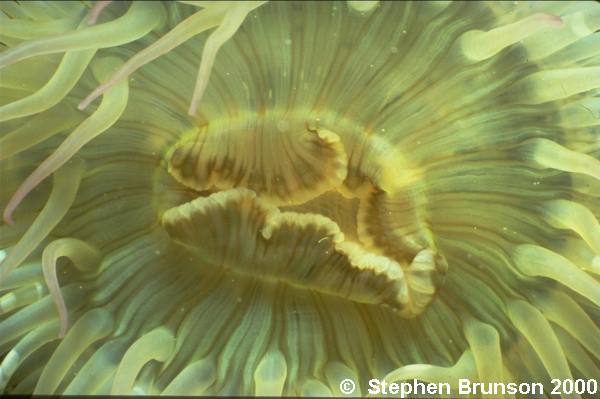








Sea Anemones and Corals
The body cavity is divided into sacs, septa, extending from the body wall. These septa increase the surface available for the secretion of digestive juices and the absorption
of nourishment. They also contain the gonads which contain the sperm and eggs. Sexual reproduction is the rule; budding and fission are comparatively rare. The eggs are
usually fertilized in the gastric cavity, and the young are discharged from the mouth as free-swimming larvae, which soon attach themselves to surfaces. Hermit crabs sometimes allow them to attach themselves to their shells, for protection.

Print Number - AC003
Limited Edition signed color photography for sale by Stephen Brunson
Anenome Statistics:
Coloration: Usually yellow with an orange mouth
Size: 1 - 4 inches
Body type: Cylindrical, one end is closed, which it attaches to rocks, coral, and even crustaceans, with a slitlike
mouth and tentacles on the other end
Defense and Diet: Nematocysts - poisonous stinging cells which paralyze small fish and other marine animals, which make
up the typical diet of the anemone
Distribution: Warm tropical waters, such as the Caribbean and the Sea of Cortez
BrunsonImages@att.net


















